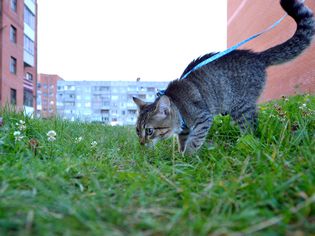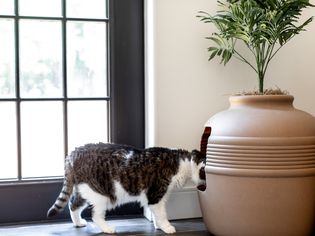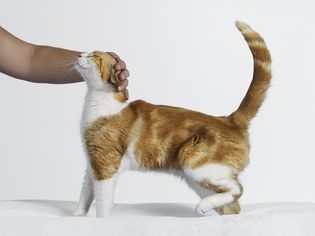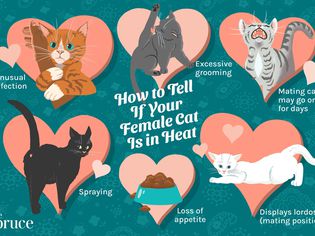Some nay-sayers will grumble that cats cannot be trained. That is not true. Cats are extremely trainable and often are trained based on signals rather than commands. You've also probably already trained your cat to come when an appropriate signal is given. Think about what happens when the can opener "whirrs" or kibble hits the bowl. The cat comes running, right? Your cat has learned a signal (can opener, rattle in the bowl) that corresponds to something the cat likes (food) and is rewarded for coming (eating). These natural responses are what a cat trainer would point out as natural training responses.
If you simply start using the word come every time you fill the bowl and within a short time your cat will understand what it means. After this, you can train your cat with clicker training and their favorite treat. Cats can be trained to come, sit, sit up, wave a paw, and walk on a leash.
The key to training is to catch your pet in the act of doing something you like and tell the pet you like it with a reward. Clicker training is one of the fastest, easiest ways to communicate this lesson. The sound of the “click” identifies the behavior and special treat rewards the cat for performing well.
Buy a Clicker
You can find clickers at pet products stores, but any unique sound can work. For example, some cats prefer the softer "snick" sound of a ballpoint pen. Your cat might respond to a tongue-click, which means you don't have to hunt for your clicker. That leaves your hands free. Be careful in selecting an everyday product (like a pen) or a regular sound, so that it doesn't confuse your cat with unnecessary noises that are not signaling training commands.
Choose a Special Reward
The reward must be of very high value to the cat. If it's something available all the time, then the cat won't care. Find out what floats your cat's boat and reserve that reward for clicker training only. For some cats, food treats work well. Cats respond first to smell, and second to taste (they won't taste if it doesn't smell good!), so choose a treat with a pungent aroma. Fishy treats are a hit with some cats. Some professional cat trainers use smoked turkey cold cuts. It takes only a tiny taste (about the size of the tip of your little finger) for a treat reward. You don't want to upset nutrition and you don't want the cat to get so full they don't want to train.
Cats may instead prefer a toy or play rewards. A special feather tease, a fetch-ball, or catnip mouse toy could be the reward incentive that makes your cat want to work. Reserve that toy so it only comes out for training which will increase the power and value.
Introduce the Clicker
For clicker training to work, you must first load the clicker. This explains to the pet that the click sound means something wonderful will happen. Basically, you associate the sound (click) with the reward (treat or toy).
Sit down with the pet and a saucer full of tiny smelly treats, and begin to CLICK (toss a treat), CLICK (treat) CLICK (treat) as many times as the cat shows interest. If the cat prefers the toy, then you'll CLICK (offer the feather), CLICK (feather), CLICK (feather), and so on.
You’ll soon see the pet look at the treats (or toy) rather than the clicker when it makes the sound. Be aware that cats won't want to train for as long a period of time as dogs. Your feline may be done after only half a dozen repeats. Several very short training sessions are more beneficial than a single marathon event.
Identify the Training Behavior
Once your cat understands the click means a reward, identify a behavior you like. For example, sit around watching the new 8-week-old kitten (yes they can be trained at this age!) until the baby happens to “sit.” Then click the behavior and hand over a treat. The kitten will look clueless. It’ll wander around and eventually “sit” accidentally again (click-treat!). Be sure that you time the click to the exact moment the cat performs the behavior. Timing is key. By the third time this happens, you’ll see the lightbulb go off. Once that happens, the cat will probably follow you around doing the behavior in order to get a treat.
Training goes beyond the trick aspect and engages the pets’ brains. You can extend training to include accepting a crate, a halter and/or leash, rides in the car, and more. Training strengthens the bond between owner and cat because suddenly you are communicating. The cat realizes that they can control the outcome by their actions.
Problems and Proofing Behavior
Don't be discouraged if it takes your cat some time to respond to the clicker training. If the treat aspect isn't working, try swapping the treat for a toy or a more enticing treat. A common mistake is to expect immediate results, but it can often take a while for cats to respond to the clicker. Also, just because your feline has responded to the clicker for one behavior, don't automatically assume it will work for other behaviors.










Comments on " How to Clicker Train Your Cat" :